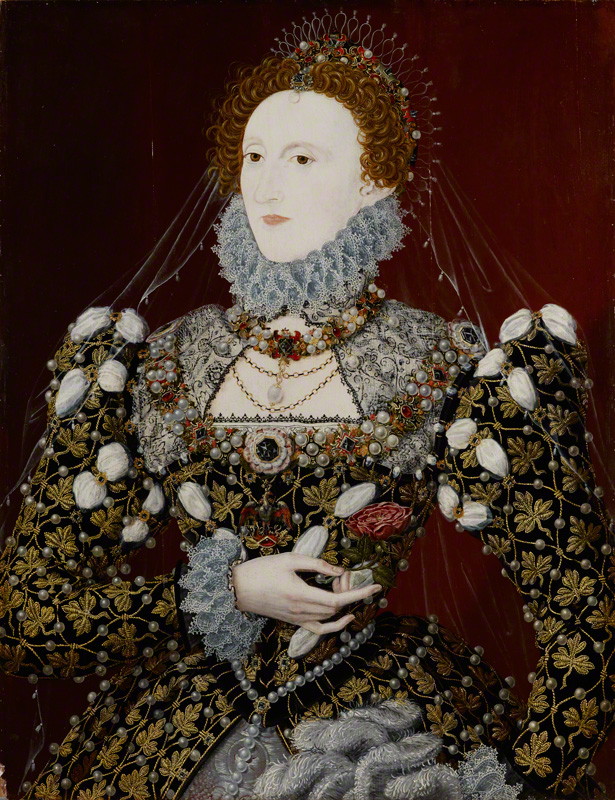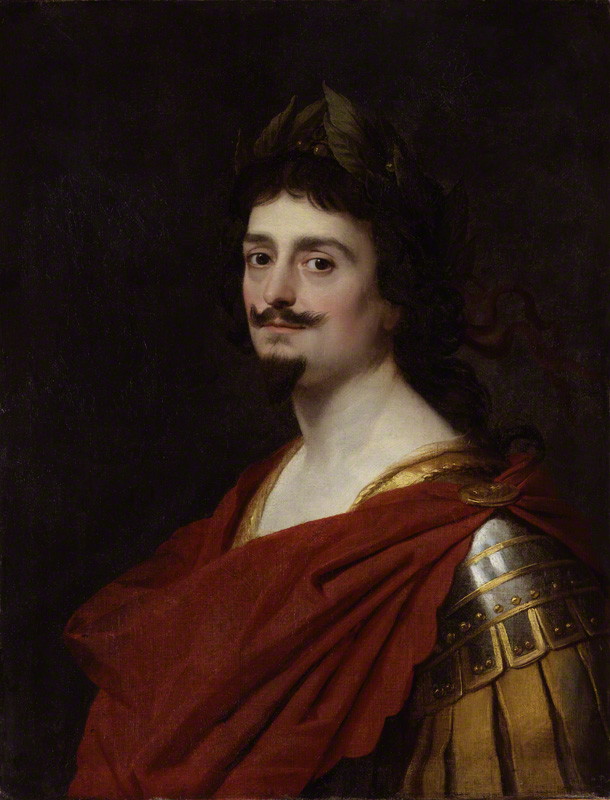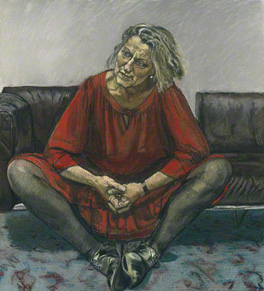Crystal Bennes heads to London for her series about museum storage collections and the art hidden away inside them
‘It has always struck me that Historical Portrait-Galleries far transcend in worth all other kinds of National Collections of Pictures whatever; that, in fact, they ought to exist […] in every country as among the most popular and cherished national possessions.’ (‘Project of a National Exhibition of Scottish Portraits’, 1855, Thomas Carlyle)
Thomas Carlyle’s words, printed in Proceedings of the Society of Scottish Antiquaries, were repeated the following year in the House of Lords by Philip Stanhope, 5th Earl Stanhope. In a long speech to his fellow peers, Stanhope argued for the creation of a dedicated Gallery of National Portraits of ‘those persons who are most honourably commemorated in British history as warriors or as statesmen, or in arts, in literature, or in science’. Stanhope prevailed and by 1859 the National Portrait Gallery opened in its first space on 29 Great George Street in London. If the collection’s first acquisition, the so-called Chands portrait of Shakespeare, says much about what kind of British history was considered worthy of being told in the mid 19th century, policies have evolved with the times. To discuss some of the complexities involved in conveying the history of Britain through portraiture, I met Rab MacGibbon, an Assistant Curator, in the National Portrait Gallery’s off-site storage facility in south London.
A person of exceptional historical interest
The ‘Phoenix’ portrait of Elizabeth I (c.1575), associated with Nicholas Hilliard
Nicholas Hilliard was appointed Elizabeth’s official court artist around 1570. While Hilliard’s exceptional miniature, painted in 1572 when the queen was 38 years old, is a highlight of the National Portrait Gallery’s collections, this larger portrait is also of considerable interest. A sister version is held by Liverpool’s Walker Art Gallery, with Elizabeth facing in the opposite direction, wearing a pelican rather than a phoenix pendant.
Although Hilliard has traditionally been considered a miniaturist, the similar face patterns between the two portraits and the miniature, alongside research suggesting that the artist’s studio did accept commissions for portraits ‘in large’, mean that the portraits are now deemed to be associated to the artist. And dendrochronology indicates that the panels for both paintings derive from the very same tree in the Eastern Baltic. The two pictures were shown side-by-side in 2010, after which the National Portrait Gallery’s ‘Phoenix’ portrait underwent conservation treatment in 2013/14 to remove old, discoloured varnish.
Some 10 contemporary likenesses of Elizabeth I make up part of the Gallery’s Tudor collection, with a minimum of three images of her on display at any one time. ‘Elizabeth I is a person of exceptional historical interest,’ MacGibbon explains. ‘But she also comprises part of the national curriculum and our education programme is very important.’

Queen Elizabeth I, (c. 1575), associated with Nicholas Hilliard. Photo: © National Portrait Gallery, London
Subject inconnu
Unknown man, formerly known as Cornelius Johnson (1636), Cornelius Johnson
There are a surprising number of unknown subjects dotted throughout the collection. A number of pictures were originally acquired as a specific sitter, but later research proved the initial attribution false, such as this portrait formerly known as James Scott, Duke of Monmouth (the eldest illegitimate son of Charles II) or this portrait formerly known as Henry Purcell’s brother, Daniel.
This captivating picture was purchased in 1920 as a self-portrait of English-born Dutch artist Cornelius Johnson. Although the image strikes one immediately as a self-portrait (the telltale gesture of the hand directed towards the chest, the clear gaze directed out), the sitter’s features bear little resemblance to authenticated portraits of the artist – such as in this later engraving. Despite the picture’s attractions, there is sadly little opportunity to display a portrait of an unknown sitter. Nevertheless, creative curatorial thinking on the part of the National Portrait Gallery has at least opened up possibilities. In the 2011 Imagined Lives: Portraits of Unknown People exhibition, authors were invited to create fictitious narratives describing portraits of unknown subjects. Writer Joanna Trollope was paired with the picture, resulting in a description of the inner thoughts of our gentleman in The Diary of Paxton Whitfield.

Unknown man, formerly known as Cornelius Johnson (1636), Cornelius Johnson. National Portrait Gallery, London
It’s the artist, stupid
John Seymour Lucas (1905), John Singer Sargent
There are certain instances in which the artist seems to take precedence over the sitter. MacGibbon pulls out this picture of John Seymour Lucas as an example of a sitter who resides in stores having fallen into relative obscurity, but the painting quickly prompts an interesting discussion on Singer Sargent. If Lucas was a popular genre painter in his day – Singer Sargent and Lucas were Royal Academicians together in the 1890s – today he is largely forgotten. There’s no argument to be made that the portrait was obtained at the height of Lucas’s popularity, either, as it was gifted by the sitter’s granddaughter in 1978. As with Elizabeth I, here we might describe Singer Sargent-the-artist as a person of exceptional interest within the National Portrait Gallery collections. A gallery display had, until its recent dispersal to make way for a dedicated photography display, been dedicated exclusively to the work of Singer Sargent. The collection has over 20 of the artist’s portraits. Lucas, unfortunately, isn’t a significant enough person to occupy permanent wall space.

John Seymour Lucas, (1905), John Singer Sargent. National Portrait Gallery, London
Waiting for conservation
Thomas Burnet (1675), Jacob Ferdinand Voet
The reason why this portrait of British scientist Thomas Burnet is in storage is a neat illustration of the curatorial balance between interest and importance. Burnet, a fascinating figure in 17th-century English science, took a theological approach to geological processes; investigating, for example, whether or not Noah’s Flood would have been possible given the amount of water present on Earth’s surface. While one might expect that the fall of speculative cosmogony in the history of British science may have contributed to Burnet’s appearance on the storage racks, this is not the case. Instead, Burnet is in need of costly conservation work and is simply not high-profile enough a figure to warrant fast-tracked restoration, especially not when more famous contemporaries such as Isaac Newton and chemist Robert Boyle already occupy display space in the gallery.

Thomas Burnet, (1675), probably by Jacob Ferdinand Voet. National Portrait Gallery
Importance by association
Frederick V, King of Bohemia and Elector Palatine (1635), Gerrit van Honthorst
This rather bathetic portrait of Bohemia’s so-called Winter King (he reigned for only one winter), was painted three years after the death of Frederick V. Having been nominated king by the Bohemian nobles in 1619, Frederick and his wife, Elizabeth Stuart, Queen of Bohemia (sister of Charles I), began their reign in Prague. Just over a year later, Frederick was defeated by the Emperor Ferdinand II at the Battle of White Mountain and fled in exile to The Hague with his family. While in The Hague, Elizabeth commissioned Gerrit van Honthorst for various pictures including this portrait of her completed after the death of Frederick. As the grandmother of George I, Elizabeth’s offspring initiated the Hanover line of succession (Elizabeth II is a direct descendant of Elizabeth Stuart) – making her an obvious choice for display in the National Portrait Gallery. Frederick’s interest, however, stems only from his association with Elizabeth. MacGibbon comments that the Winter King’s portrait would almost never be displayed in isolation from his wife.

Frederick V, King of Bohemia, (1635), Gerrit van Honthurst. National Portrait Gallery, London
Portrait on paper
Germaine Greer (1995), Paula Rego
While the National Portrait Gallery holds nine portraits of Germaine Greer, only one – this pastel on paper – is not a photographic work. Since 1979 the Gallery’s commissioning programme has paired important figures in British history and culture with contemporary artists. This portrait of Greer, commissioned in 1995, is another example of artist first, then subject. The National Portrait Gallery asked Paula Rego if she would paint a portrait for the collection. When Rego acquiesced, it was Greer she wanted to paint, resulting in this moody, unflattering pastel. Interestingly, Greer later spoke of her misgivings about portraiture which she called a ‘minor art form at best…made by artists working in a self-limiting genre,’ even while simultaneously praising the abilities of her friend Rego. Greer also publically expressed her regret when, in 2010, Rego accepted an OBE from ‘a monarch who has never bought a work by a living artist’, rather than be ‘content with the unadorned name she has made famous and respected throughout the art world’. One of only two large-scale pastels in the National Portrait Gallery collections (the other is also by Rego, of playwright David Hare), display of the portrait is strictly limited for conservation reasons. It was last exhibited in 2015.

Germaine Greer , (1995), Paula Rego. National Portrait Gallery, London














![Masterpiece [Re]discovery 2022. Photo: Ben Fisher Photography, courtesy of Masterpiece London](http://zephr.apollo-magazine.com/wp-content/uploads/2022/07/MPL2022_4263.jpg)
Suzanne Valadon’s shifting gaze